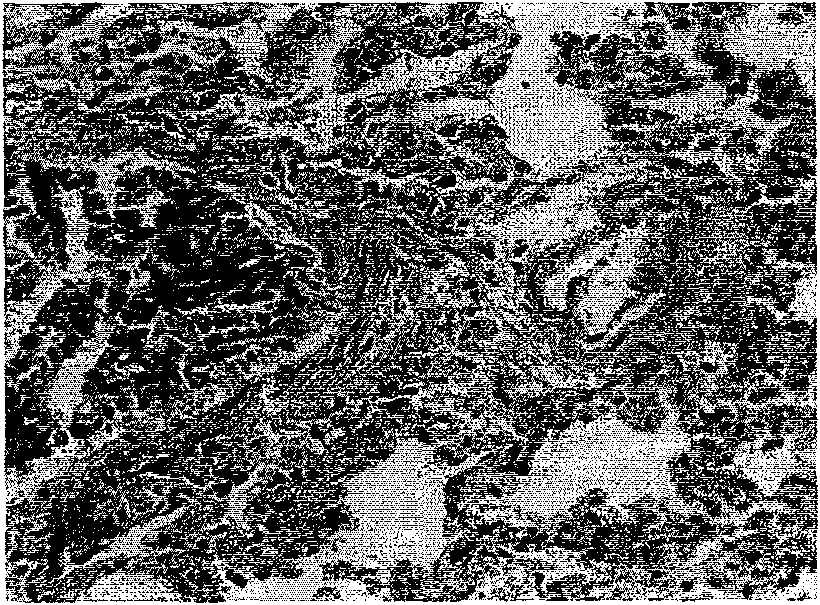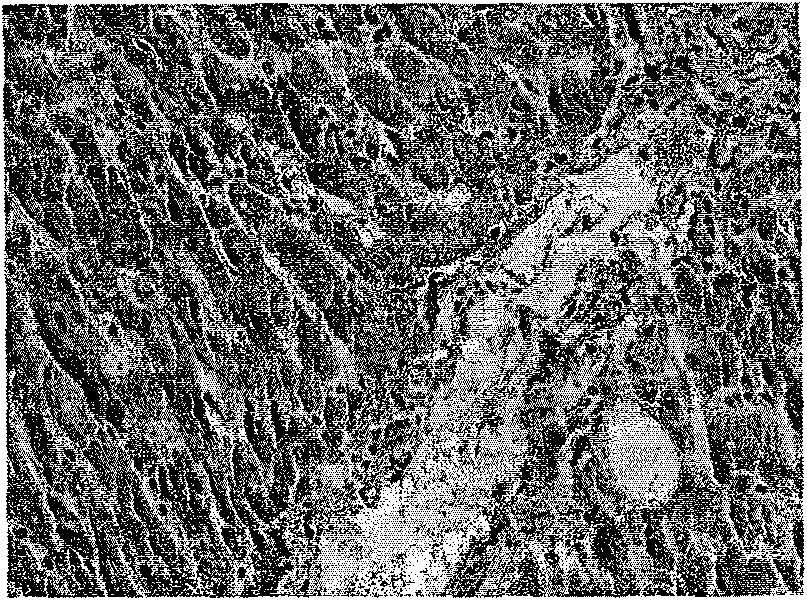Green making technology of animal tissue paraffin section
A technology of animal tissue and paraffin section, applied in the preparation of test samples, etc., can solve problems such as health damage, asthma, even cancer, and flammability
- Summary
- Abstract
- Description
- Claims
- Application Information
AI Technical Summary
Problems solved by technology
Method used
Image
Examples
Embodiment 1
[0035] Example 1 : Pathological observation of porcine blue ear disease
[0036] Select the various diseased organ tissue pieces of representative diseased pigs, and place them in the mixed fixative solution at 16:00 on the same day.
[0037] At 8 o'clock in the morning of the next day, the tissues were immersed in 85% ethanol for 1 hour.
[0038] At 9 o'clock, the tissue was soaked in 95% ethanol for 1 hour.
[0039] At 10 o'clock, tissue into 95% ethanol for 1 hour
[0040] At 11:00, put the tissue into absolute ethanol I for 1 hour
[0041] At 12 o'clock, put the tissue into absolute ethanol II for 1 hour (if using a 60°C oven, the above dehydration time is 40 minutes)
[0042] At 13 o'clock, put the tissue into the mixed transparent agent for 3 hours (if using a 60°C oven, the time is 2 hours)
[0043] At 16:00, place the tissue in paraffin I with a melting point of 52-54°C for 1 hour (in a 60°C oven)
[0044] At 17:00, put the tissue into paraffin II with a melting ...
Embodiment 2
[0058] Example 2 : Pathological observation of rex rabbit mite disease
[0059] Get skin lesion tissue, carry out by the method for tissue wax block making and section staining of the pathological observation of embodiment 1 porcine PRRS. The following are the histopathological observations of this case.
[0060] Thickening of the keratinized layer of the skin, telangiectasia and hyperemia, thickening of the keratinized layer, loosening and edema of the subcutaneous tissue (inflammation), a large number of parasites, and infiltration of inflammatory cells.
Embodiment 3
[0061] Example 3 : Pathological observation of trichomoniasis in turkey
[0062] Get sick dead chicken liver lesion lesion tissue, carry out according to the method for the tissue wax block making of the pathological observation of pig blue ear disease of embodiment 1 and section staining. The following are the histopathological observations of this case.
[0063] There were scattered and extensive confluent hepatic necrosis in the parenchyma of the turkey liver, and the boundary with the surrounding tissues was unclear. Tissue loss in the liver. Interlobular bile duct dilation, bile duct trichomonas parasitism. The number of bile ducts increased, and the epithelial cells of the bile ducts were shed.
[0064] In summary, the present invention is a technology for making animal tissue paraffin sections by green film-making method, and its characteristics are as follows:
[0065] 1. From the whole process of wax block making and section staining, there are few kinds of reag...
PUM
 Login to View More
Login to View More Abstract
Description
Claims
Application Information
 Login to View More
Login to View More - R&D
- Intellectual Property
- Life Sciences
- Materials
- Tech Scout
- Unparalleled Data Quality
- Higher Quality Content
- 60% Fewer Hallucinations
Browse by: Latest US Patents, China's latest patents, Technical Efficacy Thesaurus, Application Domain, Technology Topic, Popular Technical Reports.
© 2025 PatSnap. All rights reserved.Legal|Privacy policy|Modern Slavery Act Transparency Statement|Sitemap|About US| Contact US: help@patsnap.com



